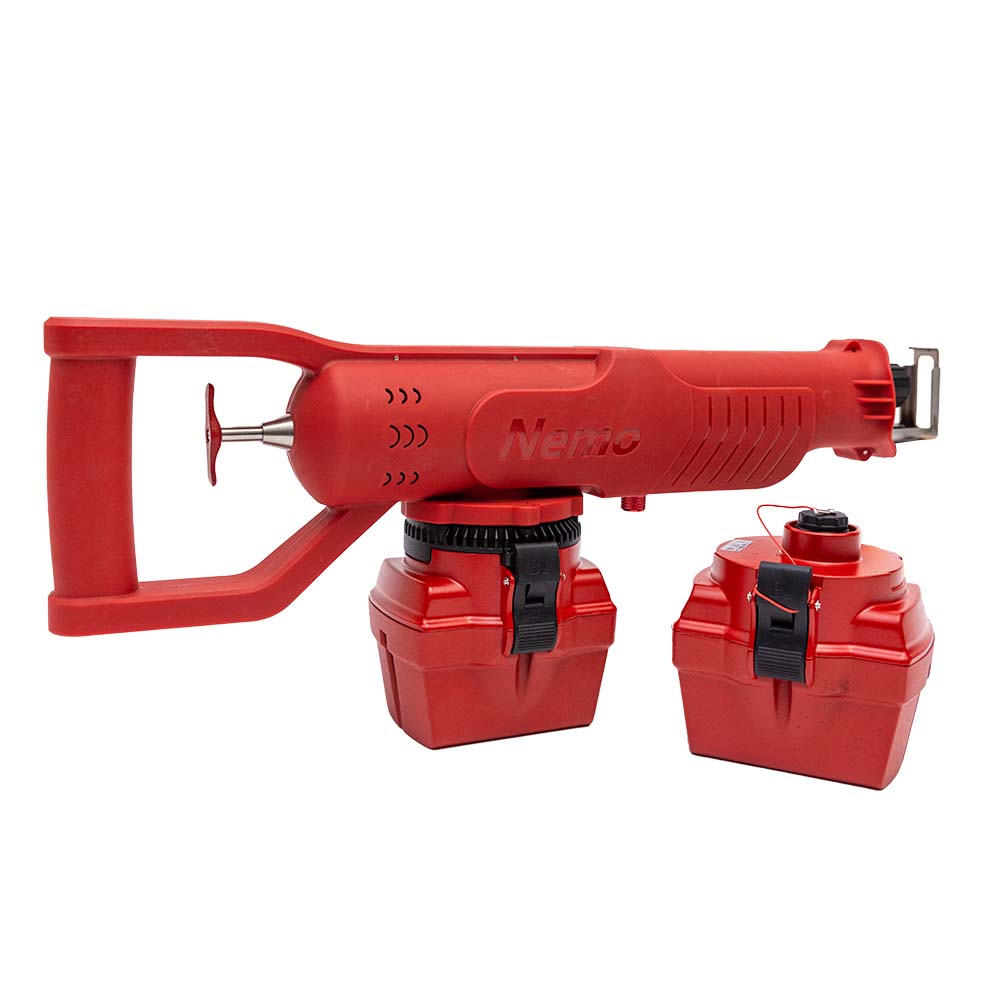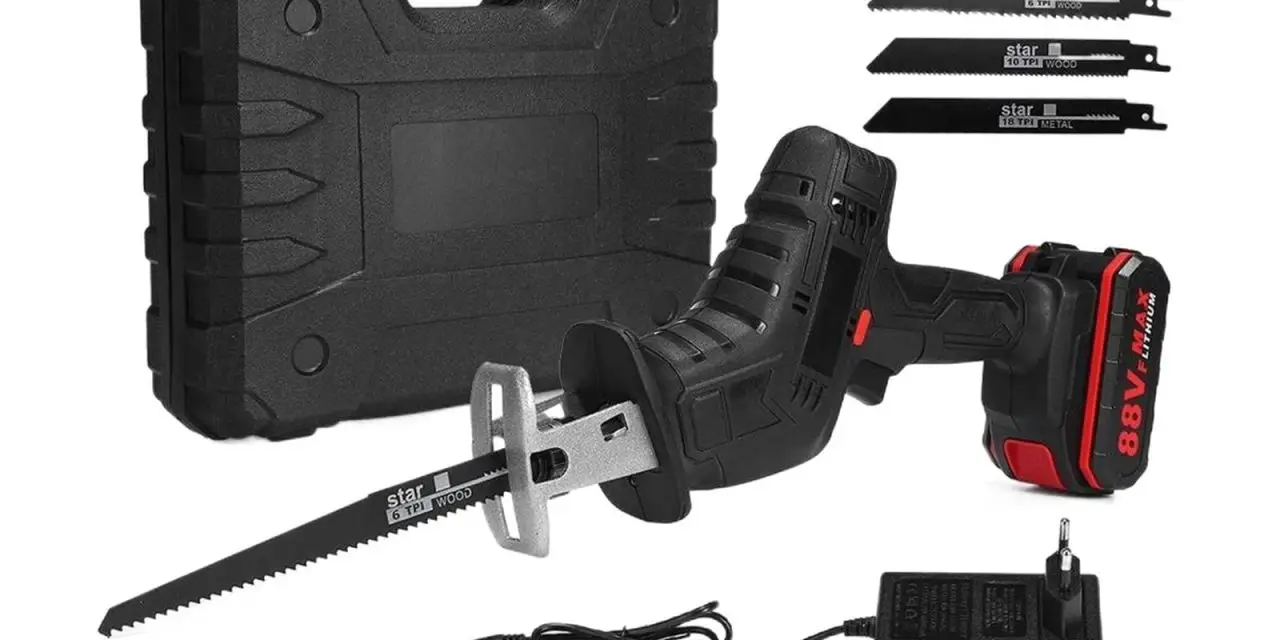A reciprocating saw is used for various tasks such as demolition, cutting wood and metal, pruning tree limbs, cutting roots, and even digging up tree root systems. It is a versatile tool that can handle tasks requiring both precision and power.
Additionally, it is commonly used for cutting nails in door frames, cutting brick or block, and creating holes for exhaust vents. Its versatility and ability to cut through various materials make it an essential tool for DIYers and professionals alike.
Whether you’re working on a construction project or tackling some home improvements, a reciprocating saw can be a valuable addition to your toolkit.

Credit: nemopowertools.com
1. Demolition
A reciprocating saw has numerous uses, including demolition. This powerful tool is perfect for taking down walls and structures. It is also handy for removing old flooring and tiles, making renovation projects much easier. With its back-and-forth motion, a reciprocating saw can effortlessly cut through various materials, such as wood, metal, and plastic.
Its versatility makes it a go-to tool for DIY enthusiasts and professionals alike. Whether you’re tearing down a wall or cutting through tough materials, a reciprocating saw is a reliable and efficient option. So, if you’re looking to tackle demolition or remodeling projects, adding a reciprocating saw to your toolkit is a wise choice.
2. Plumbing And Hvac Work
Reciprocating saws are incredibly useful for various tasks, including plumbing and HVAC work. These versatile tools excel at cutting through pipes and plumbing fixtures, allowing for easy repairs and modifications. With their powerful and adjustable blades, reciprocating saws make precise cuts in air ducts, ensuring proper ventilation and airflow in HVAC systems.
Additionally, they are highly effective at quickly and cleanly cutting through various materials like metal, wood, and plastic, making them indispensable for any plumbing or HVAC project. Whether it’s trimming pipes, removing old fixtures, or creating openings for new installations, a reciprocating saw is a reliable and efficient tool for plumbing and HVAC professionals.
3. Electrical Installations
A reciprocating saw is incredibly versatile in electrical installations. One of its uses is cutting through drywall for electrical outlets. This tool enables precise and efficient cutting, making it ideal for this task. Additionally, it is perfect for installing light fixtures and switches.
The reciprocating saw’s powerful and rapid back-and-forth motion allows for smooth and accurate cuts, ensuring a professional finish. Whether you need to make precise cuts in drywall or create openings for electrical fixtures, a reciprocating saw is an essential tool in any electrician’s arsenal.
Its versatility and efficiency make it a valuable asset in electrical installations, saving time and effort while delivering excellent results.
4. Tree Trimming And Pruning
A reciprocating saw is a versatile tool that can be used for various purposes. When it comes to tree trimming and pruning, it proves to be highly efficient. Removing tree branches and limbs is made easy with the use of a reciprocating saw.
Cutting through thick shrubs and bushes becomes a breeze with this powerful tool. Whether it’s trimming overgrown branches or shaping your trees, a reciprocating saw is a handy companion. Its ability to quickly cut through wood and other materials makes it an ideal tool for many outdoor projects.
So, next time you find yourself in need of trimming trees or bushes, consider using a reciprocating saw to get the job done effortlessly.
5. Metal Cutting And Shaping
A reciprocating saw is a versatile tool with various uses, including metal cutting and shaping. When it comes to cutting metal pipes and rods, a reciprocating saw is a powerful tool that can swiftly and precisely make the necessary cuts.
Additionally, it is also ideal for shaping metal sheets and panels, allowing for customization and fabrication. Whether you are a professional contractor or a DIY enthusiast, a reciprocating saw is a valuable addition to your toolkit. With its ability to cut through different types of metals efficiently, this tool proves its versatility and reliability in various applications.
So, if you need to perform metal cutting or shaping tasks, a reciprocating saw is the go-to tool that can make the job easier and more efficient.
6. Diy Furniture And Woodworking
A reciprocating saw is a versatile tool that can be used for various DIY furniture and woodworking projects. One of its uses is cutting lumber for furniture projects. Whether you’re building a chair, table, or shelf, a reciprocating saw can make the process much easier.
It allows you to make precise and intricate cuts on wooden surfaces, giving your furniture a professional and polished look. With a reciprocating saw, you can easily cut through different thicknesses of lumber and create the desired shapes and angles for your furniture pieces.
It’s a valuable tool for any DIYer or woodworking enthusiast looking to take their projects to the next level.
7. Automotive Repairs And Restoration
Automotive repairs and restoration often require cutting through metal parts and frames. Reciprocating saws are incredibly useful tools for this purpose. Whether you’re restoring classic cars or motorcycles, a reciprocating saw can make your job much easier. With its powerful and precise cutting action, you can quickly and efficiently cut through metal components, such as exhaust pipes, brackets, and even frames.
The versatility of a reciprocating saw allows you to tackle various tasks, from removing rusted bolts to cutting through stubborn materials. It’s a must-have tool for any automotive enthusiast or professional mechanic. So, if you’re looking to streamline your automotive repair and restoration process, a reciprocating saw is an indispensable tool to have in your arsenal.
8. Emergency Rescue Situations
In emergency rescue situations, a reciprocating saw proves to be an invaluable tool. Its ability to cut through debris allows rescue teams to quickly access blocked passages and doors, aiding in the swift evacuation of people trapped in dangerous situations.
Whether it’s removing fallen trees or cutting through metal barriers, the reciprocating saw’s power and versatility make it an essential tool for emergency response teams. Its effectiveness in cutting through various materials makes it a go-to tool for rescue operations.
The reciprocating saw’s efficiency in handling different cutting tasks ensures that rescue personnel can quickly and safely reach those in need. The use of a reciprocating saw in emergency situations is vital in ensuring the safety and well-being of both victims and rescuers alike.
9. Home Improvement And Renovation
A reciprocating saw is a versatile tool that can be put to various uses in home improvement and renovation projects. One of its uses is removing old nails and screws, making it easier to dismantle structures and replace hardware. Additionally, the reciprocating saw is great for cutting through drywall and insulation, whether you are installing new electrical outlets or creating openings for windows and doors.
Its powerful back-and-forth motion allows for precise and efficient cutting, saving you time and effort. With the right blade, this tool can also be used for cutting through a variety of materials such as wood, metal, and PVC pipes. Whether you are a professional contractor or a DIY enthusiast, a reciprocating saw is a must-have tool for any home improvement project.
10. General Construction And Remodeling
Reciprocating saws are widely used in general construction and remodeling projects. They are especially handy for making rough cuts on construction materials. When renovating and remodeling homes and buildings, a reciprocating saw can be used to cut through various materials like wood, metal, pipes, and nails.
It is ideal for demolition work and can easily cut through lumber with nails, door frames, tree limbs, roots, brick, block, and even rebar. The ability to make clean and precise cuts makes the reciprocating saw a valuable tool for construction professionals and DIY enthusiasts alike.
With its versatility and power, it’s no wonder the reciprocating saw is a staple in the construction industry.
Frequently Asked Questions On What Are The Uses Of A Reciprocating Saw?
What Would You Use A Reciprocating Saw For?
A reciprocating saw can be used for various tasks such as demolition, cutting through materials like wood and metal, pruning tree limbs, cutting roots, and more.
When Should You Not Use A Reciprocating Saw?
A reciprocating saw should not be used in the following situations: 1. Cutting delicate materials that may get damaged easily. 2. Performing precise and intricate woodworking tasks. 3. Working in tight spaces where maneuverability is limited. 4. Cutting through large, solid metal objects.
Is It Worth Buying A Reciprocating Saw?
Yes, buying a reciprocating saw is worth it. It has multiple uses for demolition, cutting, pruning, and more.
Conclusion
A reciprocating saw is a versatile tool that can be used in a variety of ways, making it a valuable addition to any toolbox. Whether you’re a professional tradesperson or a DIY enthusiast, this powerful tool can handle a wide range of tasks with ease.
One of the primary uses of a reciprocating saw is for demolition work, as it can easily cut through materials like wood, metal, and plastic. It’s also ideal for cutting through nails, tree limbs, roots, and even brick or block.
Additionally, a reciprocating saw can be used for plumbing and electrical work, making it a valuable asset for contractors. With its interchangeable blades and adjustable settings, this tool offers flexibility and precision in various applications. From construction projects to home renovations, a reciprocating saw is a must-have tool that can save you time and effort.
Explore the countless uses of this versatile tool and unleash your creativity and productivity.



















